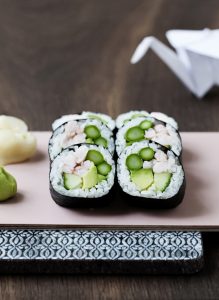
There are many people who store cooked rice for the next day. It’s a really bad idea to save sushi rice for the next day.
Sushi differs from other rice dishes such as the dish meatballs and Curry.
Sushi is not a dish that is cooked on a pan or in the oven and, this means that the quality of the ingredients used for sushi should be as good as possible.
If sushi rice is more than 1 day old or that vegetables have become a bit slack, then it can be tasted when used for sushi. You will make sushi of a poorer quality.
What happens to sushi rice when stored for the next day is that they become drier and looser in consistency while the rice kernel itself becomes harder.
Besides the fact that it is harder to make sushi with day-old sushi rice, it can also be tasted if the sushi rice is not freshly made.
This is not necessarily the case with day-old rice which is used for Meatball and Curry, as it is the sauce that hides the rice and its taste.
Read more about Sushi course for beginners
_
Zoë has lectured and held sushi courses for A. P. Moller – Maersk, Hugo Boss Nordic, Novo Nordisk, Novartis, Velux, Gorrissen Federspiel, Beierholm revision, Elbek & Vejrup and many more.






